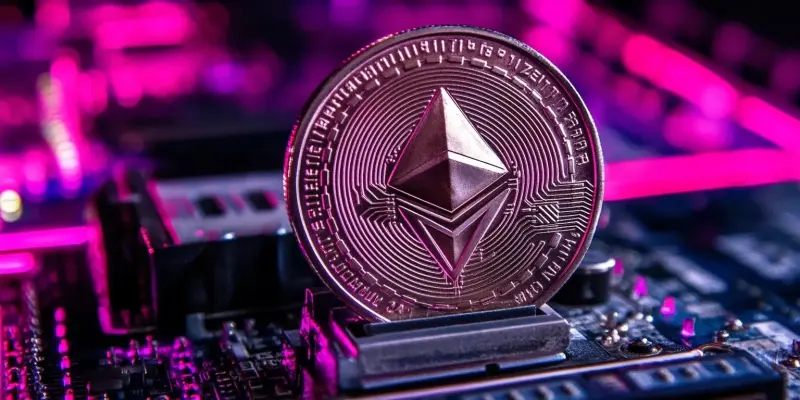The significant decline in Ethereum transaction fees, now at their lowest level in four years, is a remarkable development reshaping the market and technological landscape of the Ethereum network. This change is primarily attributed to the implementation of Ethereum Improvement Proposal (EIP-1559) and the adoption of layer-2 scaling solutions like Arbitrum and Optimism. By reducing congestion on the network, these advancements have brought the average transaction fee down to 0.00005 ETH from a previous high of 0.005 ETH in early 2024. During this period, Ethereum was trading around $2,300, with a daily trading volume hovering at approximately $15 billion, highlighting a stable market environment.
The reduction in transaction fees has quickly spurred an increase in trading activity within Ethereum-based markets. Major Ethereum pairs like ETH/BTC on Binance and ETH/USDT on Kraken have experienced noticeable growth in trading volumes, drawing attention to the benefits of reduced fees. Lower transaction costs have also heightened institutional interest in decentralized finance (DeFi) applications on Ethereum. Consequently, there’s been a notable 10% increase in the total value locked (TVL) in Ethereum-based DeFi protocols, now reaching an impressive $50 billion.
Boosted Trading Activity
The significant decline in transaction fees has invigorated trading activity across Ethereum-based markets, which can be observed through the increased volumes in major Ethereum pairs on various exchanges. Notably, ETH/BTC on Binance and ETH/USDT on Kraken recorded considerable growth, underscoring traders’ enthusiasm for lower-cost transactions. This uptick also dovetailed with an increase in institutional interest, fostering wider adoption and deeper market engagement. Such enhanced activity is indicative of a broader trend where traders seek networks that offer cost efficiencies and swift transaction processing, elements increasingly synonymous with Ethereum.
Further boosting Ethereum’s appeal is the technical analysis perspective, where Ethereum’s price chart shows bullish indicators like the formation of a ‘golden cross’ and a stable Relative Strength Index (RSI) at 65. These signs suggest positive market sentiment and potential for sustained upward momentum, driven by reduced transaction costs. As market dynamics shift in favor of Ethereum, more traders and institutions are taking notice, contributing to continuous growth. The significant reduction in fees has paved a more accessible path for routine and significant transactions alike, fostering a robust trading environment that attracts diverse market participants.
Encouraging Institutional Interest
Lower Ethereum transaction fees have not only mobilized individual traders but have also fueled a rise in institutional interest, particularly in decentralized finance applications. The appeal of DeFi platforms on Ethereum is evidenced by the 10% increase in the total value locked in DeFi protocols, which now stands at a substantial $50 billion. Such growth highlights Ethereum’s emerging role as a preferred blockchain for financial and technological innovations, driven largely by cost-effective and efficient transactions. Institutions, in their quest for yield and efficiency, are finding Ethereum’s ecosystem increasingly attractive.
Moreover, this wave of institutional interest is setting the stage for broader mainstream adoption. As large financial entities and corporate investors dive into Ethereum-based DeFi protocols, they are indirectly vouching for the network’s robustness and scalability. This credence triggers a domino effect, influencing smaller enterprises and retail investors to engage with Ethereum’s DeFi platforms. Such growing institutional involvement also propels technological advancements within the Ethereum network, encouraging continuous improvements and further fostering an environment conducive to innovation and growth in blockchain applications.
Rise of AI and Blockchain Integration
The reduction in Ethereum’s transaction fees has also catalyzed significant activity in the AI-driven trading and blockchain-based AI application sectors. One prominent example is SingularityNET (AGIX), an AI-related token that saw a 5% increase in trading volume, reflecting broader market enthusiasm for AI and blockchain integration. This enthusiasm is quantifiable with the AI Crypto Sentiment Index, which has climbed to 70 out of 100. This index indicates positive sentiment towards AI projects within the blockchain space, a testament to the increasing synergy between these two cutting-edge technologies.
As Ethereum continues to enhance its network infrastructure, the integration of AI and blockchain is likely to deepen, providing fertile ground for innovation. Researchers, developers, and entrepreneurs are exploring various applications—ranging from predictive analytics to decentralized AI platforms—that can benefit from Ethereum’s low transaction costs and robust ecosystem. As a result, the convergence of AI and blockchain is expected to usher in a new era of technological advancements, with Ethereum positioned at the forefront. This synthesis not only promises groundbreaking applications but also reaffirms Ethereum’s position as a pivotal platform driving the future of blockchain and AI technologies.
Future Prospects and Considerations
The drastic drop in Ethereum transaction fees, now at the lowest in four years, is a significant development impacting the Ethereum network’s market and technology. This shift is mainly due to the introduction of Ethereum Improvement Proposal (EIP-1559) and the uptake of layer-2 scaling platforms like Arbitrum and Optimism. These measures have effectively eased network congestion, slashing the average fee from 0.005 ETH in early 2024 to just 0.00005 ETH. Back then, Ethereum was valued around $2,300 with a daily trading volume near $15 billion, indicating market stability.
The lower transaction fees have rapidly fueled an uptick in trading activity within Ethereum-related markets. For instance, trading volumes for major Ethereum pairs like ETH/BTC on Binance and ETH/USDT on Kraken have surged, emphasizing the advantages of reduced fees. The decrease in transaction costs has also increased institutional interest in decentralized finance (DeFi) applications on Ethereum. As a result, there’s been a 10% growth in the total value locked (TVL) in Ethereum-based DeFi protocols, now amounting to $50 billion.

